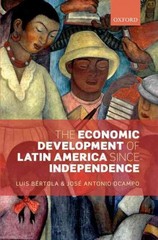I would rate if your answer is helpful, the answer is in red as an aid for you to explain, please try!
Q22. Paul Krugman summarises the history of the 2% inflation target 11: "Over the course of the 1990s many of the world's central banks converged on an inflation target of 2 percent. Why 2 percent, rather than 1 or 3? The target wasn't arrived at via a particularly scientific process, but for a time 2 percent seemed to make both economic and political sense. On one side, it seemed high enough to render concerns about hitting the zero lower bound mostly moot; on the other, it was low enough to satisfy most of those worried about the distortionary effects of inflation. It was also low enough that those who wanted true price stability - zero inflation - could be deflected with the argument that official price statistics understated quality change, and that true inflation was in fact close to zero." 'And as it was widely adopted, the 2 percent target also, of course, acquired the great advantage of conventionality: central bankers couldn't easily be accused of acting irresponsibly when they had the same inflation target as everyone else." (a) Suppose you would argue for a higher inflation target. What would be your main argument? Downward nominal wage rigidity. Efficiency may require wages in certain industries (e.g. those exposed to low-cost foreign competition) to decline in real terms so that the businesses don't need to close outright. But wages are downward rigid (in practice it is hard to get them to shrink in nominal terms), so it can be very hard to achieve real declines when faced with very low inflation. It is much easier to achieve real declines when higher inflation is eroding the value of wages (for example, see the graph below of US nominal wage changes in 2011, and notice the huge spike at precisely 0%). 12 Percent 18 16 14 12 10 8 6 A N 0 -0.5 -0.4 -0.3 -0.2 -0.1 0 0.1 0.2 0.3 0.4 0.5 Log change in reported earnings The zero lower bound. No one will lend at negative interest rates because it is better to hold cash in a safe. But sometimes, in a recession (e.g. the recent financial crisis), the central bank would like to set interest rates below -2%. With inflation at 2%, this is impossible. The costs of moderate inflation are low. The costs of inflation include things like menu costs and distortions to the smooth functioning of the price system and to the tax and benefit system. These costs are high for inflation which is high and/or highly variable (those two properties tend to go together), but the costs are low when inflation is in the neighbourhood of 4%.(h) Suppose you would argue for a lower ination target. What would be your main argument? Martin Feldstein has written13 about why the United States should move to a target of price stability [0% ination). As summaries by the NBER digest Feldstein argues\" that "given the way ination interacts with American tax law, even the current relatively low ination rate does significant damage to the economy. And he asserts that the gains from bringing ination closer to zero or "price stability" would easily offset the pain of getting there." The digest continues: Feldstein cites evidence that reducing ination from 2 percent to zero would inict a "one-time" loss [because of a temporarily higher level of unemployment) equal to about 6 percent of GDP. But the resulting price stability would produce permanent annual dividends equal to about 1 percent of GDP, he argues. And, unlike the "one- time" loss, those annual dividends would continue forever. Furthermore, Feldstein calculates that the present value of those annual gains would be equal to 30 to 40 percent of current GDP. Feldstein suggests that the benefits of ination reduction could "in principle also be achieved by eliminating all capital income taxes or by indexing capital income taxes so that taxes are based only on real income and real expenses." But he notes that "technical and administrative difficulties" make it unlikely such changes will ever be adopted, and that "no industrial country has fully [or even substantially) indexed its taxation of investment income." "Moreover, the annual gains from shifting to price stability that are identified in this paper exceed the costs of transition within a very few years," Feldstein adds. "Even if one could be sure that the tax-ination distortions would be eliminated by changes in the tax system ten years from now, the present value gain from price stability until then would probably exceed the cost of ination reduction." [c] Do you think that the ination target should he changed? In what direction? It's up to you. The Feldstein piece cited above argues for lower ination, but that was before the recent nancial crisis and the greater perceived risk of hitting the zero lower bound and the costs associated with that danger of having longer and deeper recessions. More recently, the consensus among economists seems to be shifting towards arguing for a higher target [including the chief economist of the IMF\"). Here are some prominent economists arguing that we should have something like a 4% target








